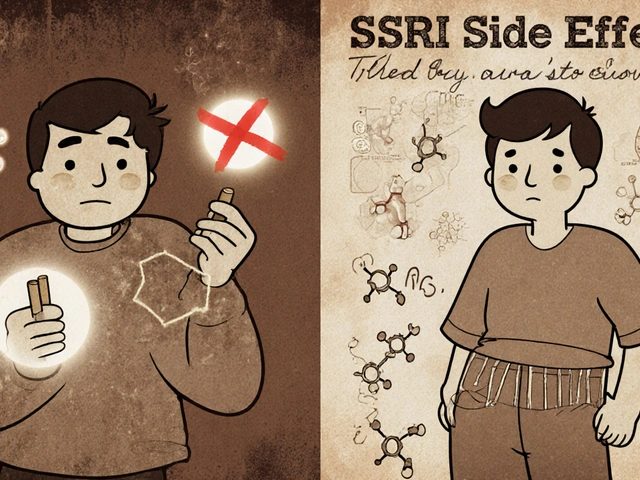Gabapentin: What It Is, How It Works, and What to Watch For
When working with Gabapentin, a prescription anticonvulsant often used for nerve‑related pain and certain seizure disorders. Also known as Neurontin, it calms over‑active nerve signals in the brain and spinal cord.
One of the biggest reasons doctors prescribe it is to manage Neuropathic Pain, pain that stems from damaged or irritated nerves and typically feels burning, tingling, or electric‑shock‑like. Whether the pain comes from diabetes, shingles, or a spinal injury, gabapentin can lower the intensity and improve quality of life. It isn’t a traditional NSAID, so it works on a different pathway, which is why it’s a go‑to option when over‑the‑counter meds fall short.
Gabapentin also plays a central role in treating Partial Onset Seizures, seizure episodes that start in a specific brain region and may spread or stay localized. By stabilizing neuronal firing, the drug reduces the frequency and severity of these events. Many patients with epilepsy find that a steady dose of gabapentin, combined with other medications, keeps their seizures under control without causing excessive drowsiness.
Because gabapentin is prescription‑only, getting a new supply often means navigating a Prescription Transfer, the process of moving a prescription from one pharmacy to another. If you move, change insurance, or simply prefer a different pharmacy, sharing your name, date of birth, and the original prescription details speeds up the hand‑off. This step is crucial for gabapentin, as missing doses can trigger a rebound of pain or seizure activity.
Like any medication, gabapentin can cause side effects, and allergic reactions are a concern for a small group of users. Symptoms such as rash, itching, swelling, or trouble breathing should prompt an immediate call to a healthcare provider. Recognizing these signs early helps prevent more serious complications and ensures you can discuss alternative treatment options if needed.
Key Points to Consider Before Starting Gabapentin
First, talk to your doctor about your current meds because gabapentin can interact with anti‑depressants, opioids, and certain sleep aids. Second, start with a low dose; the typical titration schedule ramps up every few days to reach the target dose while monitoring for dizziness or fatigue. Third, keep a medication log—note the time you take gabapentin, any side effects, and changes in pain or seizure frequency. This record is useful both for your doctor and for pharmacy staff during a prescription transfer.
Finally, stay aware of how lifestyle factors affect gabapentin’s performance. Alcohol can increase drowsiness, while missing a dose may cause a temporary spike in pain or seizure activity. Planning ahead—setting reminders or using a pill organizer—helps you stay consistent and get the most benefit from the drug.
Below you’ll find a curated collection of articles that dive deeper into each of these areas, from managing side effects to navigating pharmacy transfers and understanding the science behind gabapentin’s pain‑relieving properties. Explore the posts to get practical tips, real‑world examples, and answers to common questions.

Neurontin (Gabapentin) vs Alternatives: Detailed Comparison Guide
A detailed guide comparing Neurontin (gabapentin) with top alternatives, covering mechanisms, side effects, costs, and how to choose the right medication.
Read More




